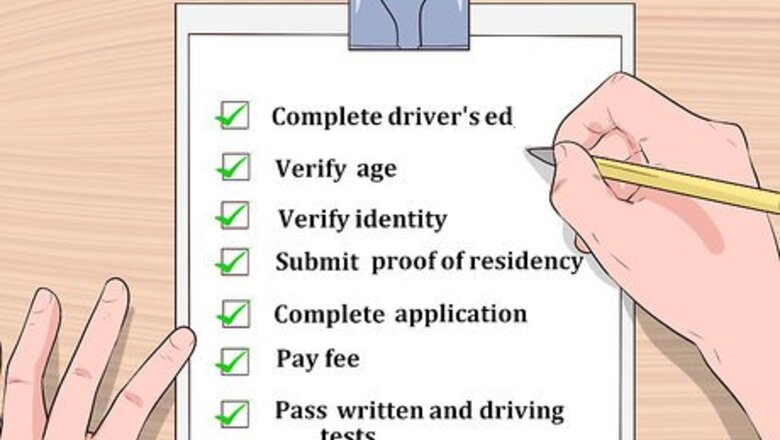
views
Meeting the Necessary Requirements
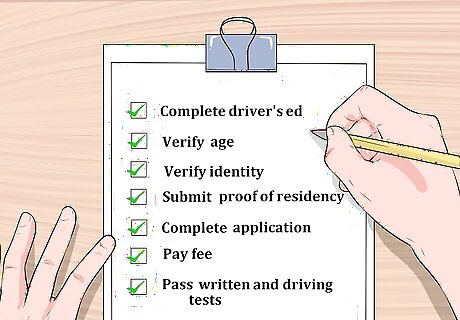
Study the requirements in your jurisdiction. Though the process of obtaining a driving permit is similar in most countries, the laws will be a little bit different everywhere. Make sure you familiarize yourself with the specific requirements for applying and testing for a driving permit where you live. The information in this article will mostly deal with how to get a learner's driving permit in the United States. You can usually find information about laws and licensing where driver testing is administered in your area, or online through the website for the department of motor vehicles that governs your locale.
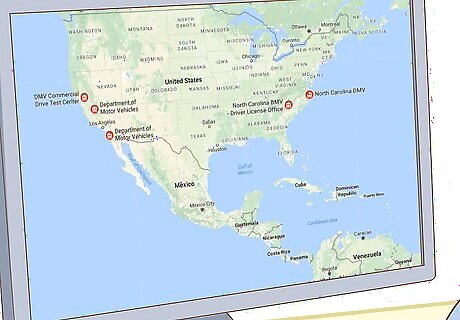
Locate the DMV headquarters in your area. Find a Department of Motor Vehicles office near you where you can go to apply for your permit, pay the necessary fees and take your written driving theory test. Most states have several DMV locations to make getting your permit more convenient. Check online to find the DMV office closest to where you live. The official website of the DMV has a search feature that maps out where all the offices are in your area. The lines at the DMV can be quite long. Be sure to allow yourself plenty of time when you go in case you have to wait.
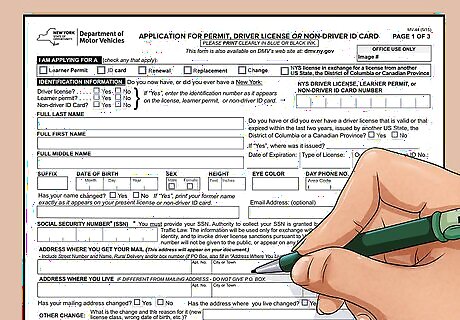
Submit an application to receive your driving permit. Before you can take the test to earn your learner's privileges, you'll need to inform the state of your intent to receive your permit. Fill out a permit application with your personal information and return it to the DMV. Once you've taken care of the application process, you'll receive your study materials for the written driving test. The permit application will ask for basic information, such as your full legal name, date of birth, home address, hair color, eye color, etc. Apply for your learner's permit online to save yourself a trip to the DMV office.
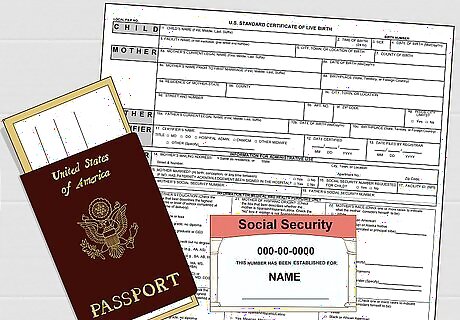
Provide proof of identity. The DMV will ask you to supply them with at least two forms of personal ID, one of them being your social security card. This usually means a birth certificate, social security card, passport or other recognized form of photo ID, although many different ID forms are accepted. Providing identification proves that you are who you say you are and confirms that you meet the minimum age requirement to test for your permit. In most states in the US, you have to be at least 15 years old to get a driving permit. Only a handful of states, including Alaska, Arkansas and North and South Dakota, issues permits to prospective drivers as young as 14. Bring your original birth certificate or passport and your social security card along in case the DMV in your state doesn't accept photocopies. You will also need 2 pieces of mail verifying your correct address.
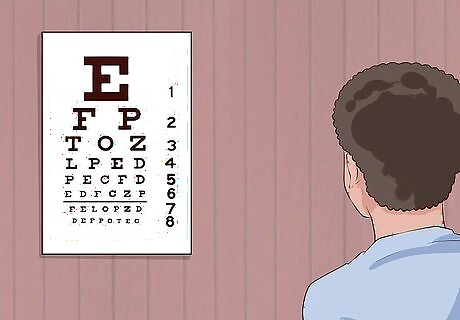
Take an eyesight exam. You'll be asked to sit for a brief eyesight exam when applying for your learner's permit. The exact nature of the exam will vary, but you might be instructed to read letters of different sizes off a chart or identify gradually smaller shapes and details from a distance. The eye exam will let the DMV officials know that your eyesight is good enough for you to learn to operate a vehicle. If you don't perform satisfactorily on your eye exam, you might have to get corrective eyewear like glasses or contact lenses. A note will be made on your permit that you have to be wearing this eyewear while driving.
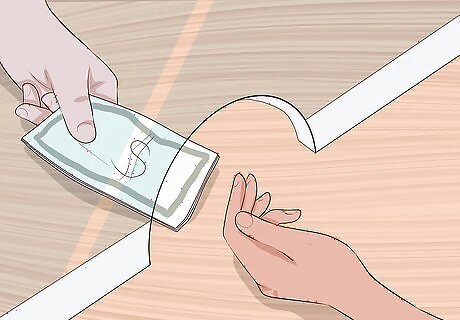
Pay any associated fees. While at the DMV, go ahead and pay whatever fees are required for testing and certification. There are sometimes separate fees involved for submitting an application, taking an eyesight exam and sitting for the written test. After all fees have been paid, you'll be able to schedule a date and time to take your test and receive your study materials. Fees, along with testing requirements, may be different for each state. It's not cheap to get your learner's permit. Make an effort to pass your test the first time so you won't have to pay to apply and take it again.
Passing the Test
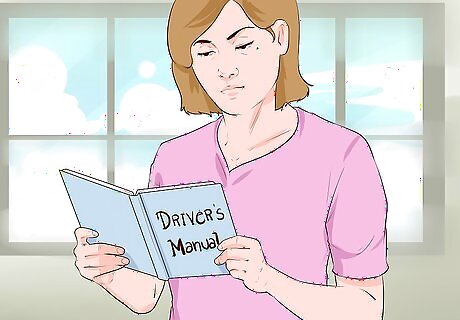
Study your driver's handbook. The DMV provides a handbook for teen drivers to review that contains up-to-date listings and explanations of their state's driving laws. Look over the handbook carefully and try to memorize as much as you can. Pay close attention the sections on basic skills and etiquette, along with what the different signs and symbols on the road mean. This is the same information you will be expected to know for the written test. Try learning the contents of the handbook one section at a time to make it easier to digest the information you're presented.
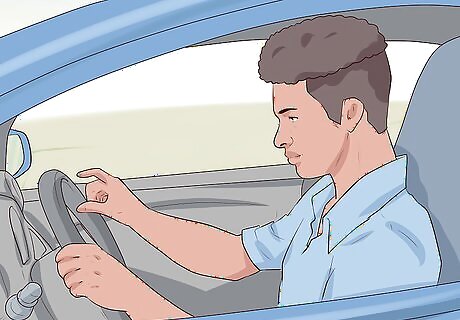
Familiarize yourself with the parts and functions of the vehicle. If possible, spend some time with a parent or other licensed driver going over the different parts of the car inside and out. They'll be able to explain how the car works and what each component does, including important features that you'll be tested on, like the headlights, turn signals, parking brake, and windshield wipers. Studying the workings of a vehicle yourself will give you some practical, firsthand knowledge that will be useful when it comes time to take your test. The written test you take will likely include questions about how to operate a vehicle. There's a lot to learn about operating a car before you even put it in gear.
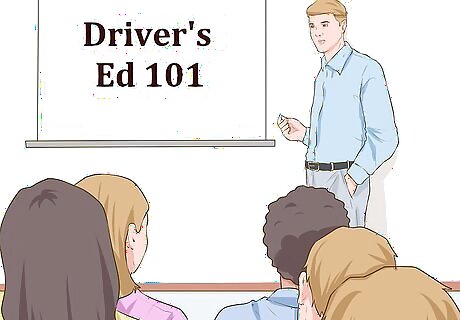
Take a driver's ed course. Enroll in a driver's ed course at your school to help educate and prepare you. Most public schools offer special classes for students who are nearing the age where they can receive their driving permit. In these classes, you'll learn more about traffic laws, how cars work and safe driving techniques that can help you avoid an accident. You will get an opportunity to practice hands-on skills like handling and parking in driver's ed. In some cases, passing a comprehensive exam at the end of a driver's ed course can stand in for the theory test given at the DMV. All but a handful of states in the US (excluding Alaska, Arkansas, Missouri, Oregon and Tennessee) require some form of driver's education.
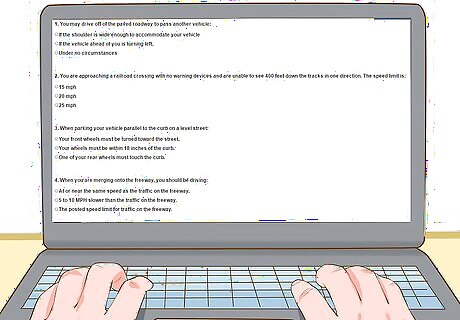
Take and pass the test. On the day you're scheduled to take your written test, make sure you arrive with plenty of time to spare. Bring whatever materials you need with you—it's possible that you might be asked to present an ID once more or pay your fees the day of the test. Stay relaxed and don't let yourself get too nervous. Remember everything you learned and give it your best shot. Try to answer each question correctly. For the most part, testing is done on computers these days, but it might still be wise to bring a number 2 pencil and/or black ink pen. Get plenty of sleep the night before and eat a hearty breakfast the morning of the test. You'll feel more alert and ready to go.
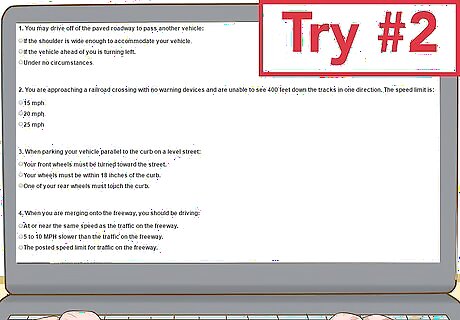
Retake the test if you fail. Not everybody passes their learner's permit test the first time around, and that's okay. It's a difficult exam that contains a lot of complex information. But don't worry. If you don't make a passing grade, just schedule a new testing date before you leave the DMV. You can retake the driving permit test as many times as you need. You may not be able to retake your test on the same day. Try to schedule a new date within the week so you don't forget what you've learned in the meantime. Do your best to pass the test the first time. Certain states like California only give you a limited number of chances to sit for the written exam.
Receiving Your Permit and Working Toward Your License
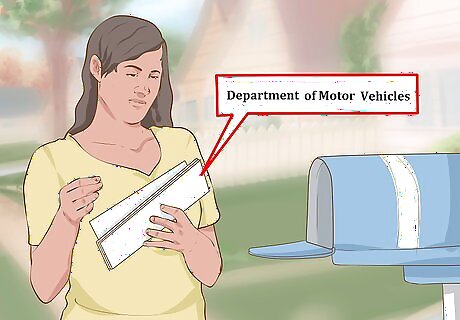
Wait for your permit to arrive. After you've passed your test, the staff at the DMV will take your picture and send off your information to be printed on your permit. It may take anywhere from a few business days to a week for you to receive a physical copy of your permit by mail. Once it's in your possession, you're free to begin learning how to drive! Your driving permit will look much like an actual driver's license, with your photo, personal information and any special provisional notes displayed on it beside your state seal. Be sure to keep your permit close at hand in your purse or wallet so you don't lose it.
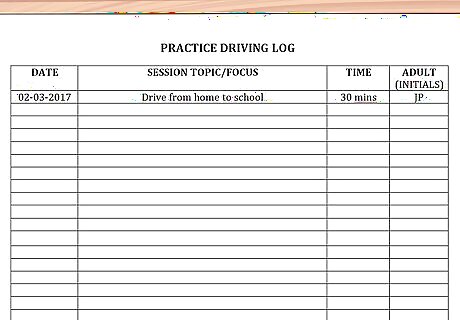
Log the required number of driving hours. In addition to passing a written exam, some states require new drivers to record the number of hours they've spent driving under the supervision of another licensed driver. If this is a requirement in your state, you can get started right away after your permit arrives. Try to drive a few hours a week at least to gain experience. In most places, you'll have to keep your permit for six months to a year before you can test for your driver's license, so you'll have plenty of time to practice. Beginner drivers are often expected to meet a minimum number of road hours that must be completed before they can test for their driver's license. A certain amount of driving hours may have to be logged at night. The number of mandatory driving hours varies from state to state. Kansas, for example, only requires you to log 25 hours behind the wheel after receiving your permit, whereas in Delaware it is a minimum of 50 hours.
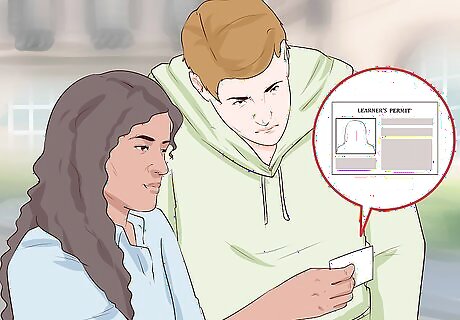
Reapply for your permit if it expires. Your driving permit will only stay valid for a certain amount of time. The expiration date will vary based on your home state and the date on which you received your permit. In the event that your permit expires before you get your driver's license, you will need to fill out another application, pay the associated fees and pass the written exam a second time. In some states, like New York, driving permits are valid for up to 5 years, while in other states they may expire after as little as 1 year. You will usually have to hold your permit for 6 months or longer before you're eligible to receive a driver's license.
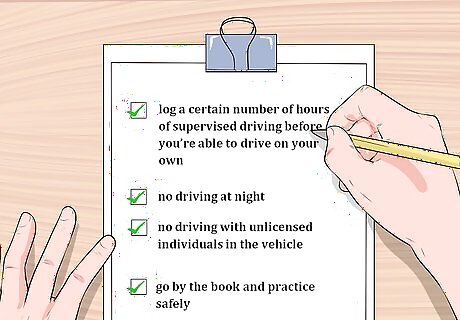
Follow the guidelines issued for the permit in your state. Just because you've earned your driving permit doesn't mean you're being turned loose to burn rubber on the streets. Depending on where you live, you may still have to log a certain number of hours of supervised driving before you're able to drive on your own. Additionally, the laws in your state may limit some privileges, like driving at night or with unlicensed individuals in the vehicle. Make sure you go by the book and practice safely so that when the time comes for you to test for your full license, you'll be ready.
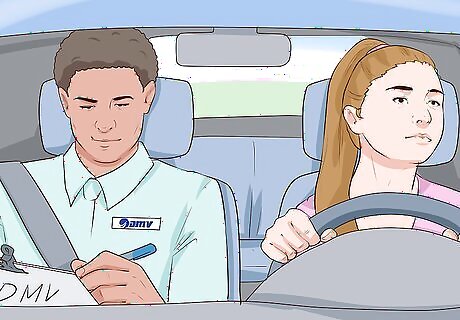
Prepare for your driver's license test. After you've held you permit for a specified amount of time, you'll be able to test for your full driver's license. This test will usually consist of two parts: a written exam and a practical portion where you actually drive a car with a testing official present. Draw upon everything you learned while studying for your permit test. If you've been logging your driving hours, you should have enough experience to help you pass the hands-on portion of the test. There is typically a separate set of requirements for obtaining a driver's license. Before you schedule a testing date, know what paperwork you need to complete, what ID you're expected to present, etc. Some states in the US, like California, require that you fulfill multiple levels of driver certification before you're able to receive an unrestricted license.




















Comments
0 comment